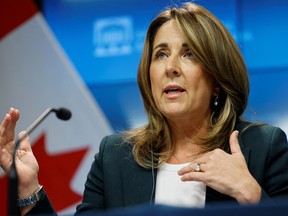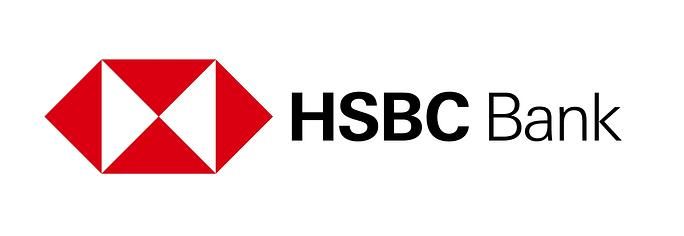Concern acknowledges balancing act the central bank faces as it fights inflation

Article content
The Bank of Canada is closely monitoring debt burdens being shouldered across the economy over concerns they could become a threat to financial stability as interest rates rise, senior deputy governor Carolyn Rogers said this week, an acknowledgement of the balancing act the central bank faces as it combats inflation.
Advertisement 2
Article content
“The two (financial stability risks) that come to mind and the two that I think are still on our minds at the federal level would be leverage and liquidity, so high levels of debt,” Rogers said during an Oct. 17 Toronto Centre panel discussion in Toronto. “This is at the consumer level, corporate level and at the sovereign level, and that is also at the domestic and international level.”
Article content
Article content
Concerns over consumer debt are hardly new. Canadians were carrying significant debt even before the pandemic, the central bank’s second in command noted. Balance sheets even improved during the pandemic as Canadians curbed their spending and built a buffer of savings, which bank economists estimated reached $300 billion. Now, the tide is turning as rising cost pressures force Canadians to take on more debt. Total consumer debt jumped by 9.2 per cent year-over-year to $2.24 trillion in the second quarter, 16.4 per cent higher than pre-pandemic levels.
Advertisement 3
Article content
Rogers also noted that high home prices mean more households have stretched their finances with mortgage debt.
Canadians are now feeling the pinch from inflation and higher rates. After hiking the policy rate by three percentage points this year to 3.25 per cent, the Bank of Canada has said it is ready to tighten even further to put a lid on decades-high inflation.
“What has changed of course is the risk,” Rogers said. “What we are seeing now is an increase in interest rates. High levels of debt are easier to sustain at low levels of interest rates. As interest rates go up to combat inflation, certainly those levels of debt can manifest into financial instability.”
Rogers pointed to the bond market drama playing out in the U.K. as an example of the kind of liquidity squeeze the Bank will be on alert for. Yields on government bonds there soared, sparking forced selling by over-leveraged pension plans, after U.K. Prime Minister Liz Truss attempted to freeze corporate taxes for next year.
Advertisement 4
Article content
While she was forced to reverse the plan and fire her finance minister, Bank of Montreal chief economist Douglas Porter said the U.K. was still “buckling under the weight of its breakneck tightening spree.”
These comments come in the same week as the central bank’s third-quarter survey of consumer expectations, which highlighted that respondents with higher levels of debt reported they are already feeling the effects of rate hikes and Canadians increasingly expect the Bank’s aggressive monetary policy to trigger a recession. Most respondents now believe the odds of a recession are now at least 50 per cent. In a separate survey, business leaders are expecting higher rates to slow sales growth, particularly those businesses relying on housing activity.
Advertisement 5
Article content
-

Recession risks are rising: We explain why
-

Pace of housing starts surges 11% amid concerns of supply shortage
Royce Mendes, managing director and head of macro strategy at Desjardins, said the survey results were not as ugly as they could have been and maintained his expectations for the terminal rate — the peak interest rate the bank will reach before starting to cut — at four per cent. The economics teams at the Canadian Imperial Bank of Commerce and the Royal Bank of Canada have a similar forecast.
The Bank’s path of interest rate increases will depend on the annualized pace of inflation, which eased over the past two headline readings from a peak of 8.1 per cent in June to its latest 7.0 per cent headline reading in August. The next reading is expected on Oct. 19.
Rogers said as interest rates increase to combat inflation, the Bank of Canada would maintain a “high level of vigilance” on their impact on stability.
“The metaphor that I’ve always liked is a forest can have a lot of dry underbrush to it, that’s sort of your vulnerability,” Rogers said. “But it needs that spark to really make that into something more dangerous: fire.”
The Bank of Canada will make its next policy rate decision on Oct. 26.
• Email: shughes@postmedia.com | Twitter: StephHughes95
Advertisement
Bank of Canada deputy says debt could threaten stability as rates rise
2022-10-18 18:55:56





